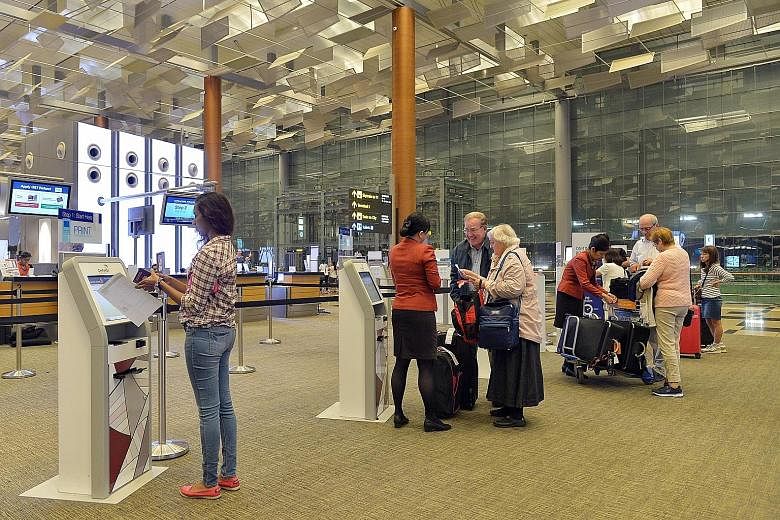Asian airports are not rolling out self-service options fast enough, with just over two in 10 travellers having access to do-it-yourself check-in or bag tagging, for example.
A global airline body has flagged this as a problem in a region that faces serious infrastructure constraints and an ever-increasing number of air travellers.
Getting travellers to do things themselves allows airports to process people faster and increase handling capacity, Mr Vinoop Goel, the International Air Transport Association's (Iata) regional director for airports, passengers, cargo and security, told The Straits Times.
Globally, three in 10 travellers are able to access self-service options that include check-in and bag tagging, aircraft boarding, document checks and flight rebooking in case of disruptions or cancellations. With the exception of Africa and Central/South America, the penetration level in Asia lags behind those of all other regions.
In North America, self-service options are available to 46 per cent of travellers, the highest for any region.
If airports in Asia do not move faster, travellers will suffer, Mr Goel warned. "We are looking at flight delays and cancellations, lots of waiting at airports and circling in the skies," he said. "It would be the worst passenger experience. This could also have a knock-on impact on tourism, which, in turn, would have an impact on jobs and other economic variables."
Many of the airports in the region have already exceeded their capacity or will reach their limit in the next five to seven years, he said.
Though some airports like Singapore's Changi and Hong Kong have definite plans to expand infrastructure, many others - including those in major hubs such as Bangkok, Manila and Jakarta - have not come up with a definite masterplan, he added.
Mr Goel said: "What we are saying is, develop a masterplan and, in the meantime, from your existing capacity, try and improve throughput with the implementation of self-service technologies."
A major stumbling block is a reluctance among governments to go high-tech, which, in some cases, requires regulations to be amended and mindsets changed.
Mr Goel said: "For example, the rule may say a boarding pass has to be stamped but how do you stamp a mobile boarding pass? You can't and so it's not accepted. Regulators are essentially risk-averse and don't like change."
For the team at Iata, the challenge is to work with regulators to make them understand that the use of biometrics, for example, is more secure than manual checks, he said.
While it is a slow process, he said, the pace is picking up in countries such as Singapore, Japan, South Korea, Australia and New Zealand.
Changi Airport's Terminal 4, which opens next year, will rely mainly on self-service kiosks to process travellers from check-in to aircraft boarding.
Iata aims to have self-service options available to eight out of 10 travellers by 2020. This would not only benefit travellers but could also potentially save the industry more than US$2 billion (S$2.7 billion) a year, Mr Goel said.
Jetstar Asia, a self-service pioneer at Changi Airport, said the response from travellers has been positive.
Head of ground operations Peter Choo said more than one in two passengers use the airline's self-service options. He said: "A key result of our self-service initiatives is the increase in productivity for our teams on the ground, with better deployment of resources, especially in manpower-scarce Singapore."


